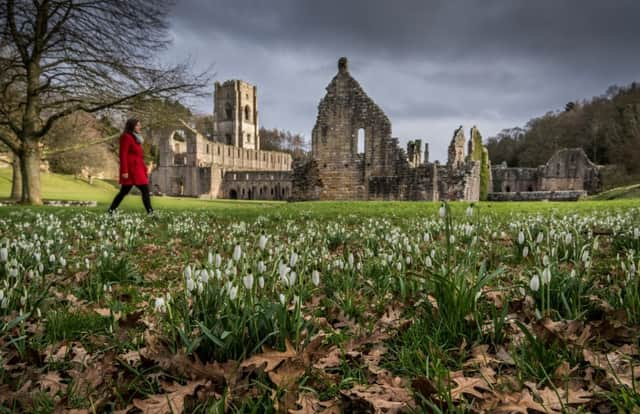Despite the cold snap, spring arrived in Yorkshire before Christmas was out


In a repeat of the pattern seen last year, insects became active and flowers started to bloom months ahead of schedule, nature sightings from the public have revealed.
In parts of the south of England, snowdrops were seen and song thrushes heard before autumn was over, the Woodland Trust said.
Advertisement
Hide AdAdvertisement
Hide AdThe first recorded sign of the warmer season to come in Yorkshire was a sighting of an early flowering hazel tree in the west of the county, on December 20. Hazel does not usually bloom until early March, but across the country this season there have been 23 sightings, with the first as early as December 1.
On Boxing Day, a bird watcher in South Yorkshire saw a blue tit building its nest – well ahead of the early April norm.
“You would normally expect quite a lot more sightings down south, then crawling up the country,” said Hollie Anderson at the Woodland Trust.
“But because it’s been so mild, there has been a relatively decent UK spread.”
Advertisement
Hide AdAdvertisement
Hide AdThe colder weather to come over the next fortnight, with average daytime temperatures across Yorkshire of 3-4 degrees and around zero at night, might do little more than hold the nascent spring in suspended animation, she suggested.
“What we’ve seen is spring almost becoming frozen in time.
“We saw this last year with the Beast from the East, when we had a real rush of spring records, then the storm arrived and everything froze.
“But the moment the snow started to thaw, everything picked up where it left off.”
A “nature’s calendar” scheme run by the trust, which asks “citizen scientists” to track signs of the seasons, has received more than 64 records of early spring activity since November.
Advertisement
Hide AdAdvertisement
Hide AdMild conditions temporarily disturbed insects from hibernation, with a small tortoiseshell butterfly spotted flying outdoors on Christmas Day in South Wales, and a red-tailed bumblebee on Boxing Day in Somerset.
A red admiral was seen on December 17 in Cambridgeshire, five months ahead of its expected appearance in the first week of May, the trust said.
Two years ago, the Met Office reported that the trend towards milder winters had lengthened the growing season by a month.
Kate Lewthwaite, citizen science manager for the Woodland Trust, said: “Data like this has continuously brought into question the way we think about the seasons, and to see spring in December no longer seems unusual.
Advertisement
Hide AdAdvertisement
Hide Ad“We were far from a white Christmas, with hazel flowers and snowdrops being spotted by our citizen scientists across the country.
“The more data we have, the better we will understand the effects of warm winters, cold snaps and heatwaves.”
Other sightings include 24 records of snowdrops around the country more than a month earlier than usual, the earliest of which was on November 30.